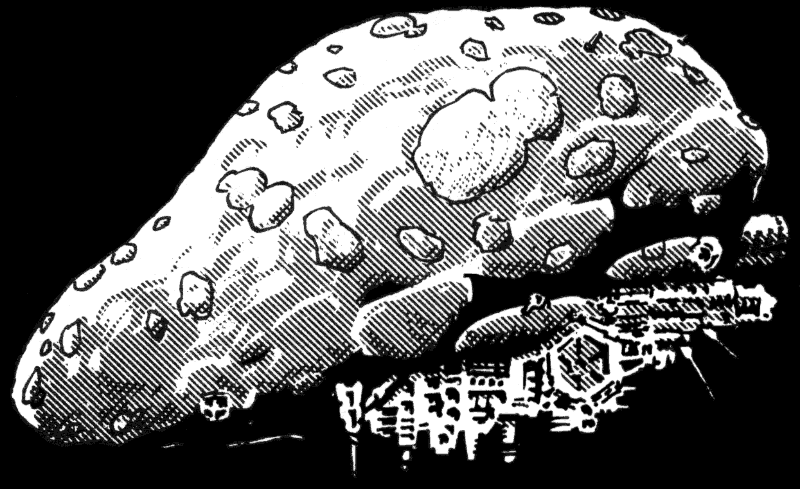
|
The Iskallon Light Frigate is a heinous sight to behold. It appears to be a almost spherical moss-drapped stone with a series of irregularities which help to distort its shape. At its rear, a plane juts out holding the engines, which are held in place by large supports. These supports coming from the hull are secured to the dorsal and ventral surface of the plane. At random intervals pieces of machinery and equipment litter the ship's surface. A living, brown and uneven, two-metre wide tendril (umbilical) that lacks gravity, allows boarding of other ships. These ships were in service at least after the Battle of Endor.
This design and many of its components such as ship's hull, navigation computer, sublight engines, power reactor and communication gear are "bred" from massive vats of organic ooze on the Iskalloni home world. Its internal atmosphere is several degrees warmer and more humid than standard. Sickly pink lighting is provided by glow patches in the walls and floor. The walls and floor appear to be of the same material as the umbilical, meanwhile operating tables and its associated straps appeared to have been grown from the deck and table. Round contracting orifices act as hatches. Interestingly, the very organic components constituting their ships produces toxic waste that must be handled by hand, in which constant exposure over several months proves lethal.